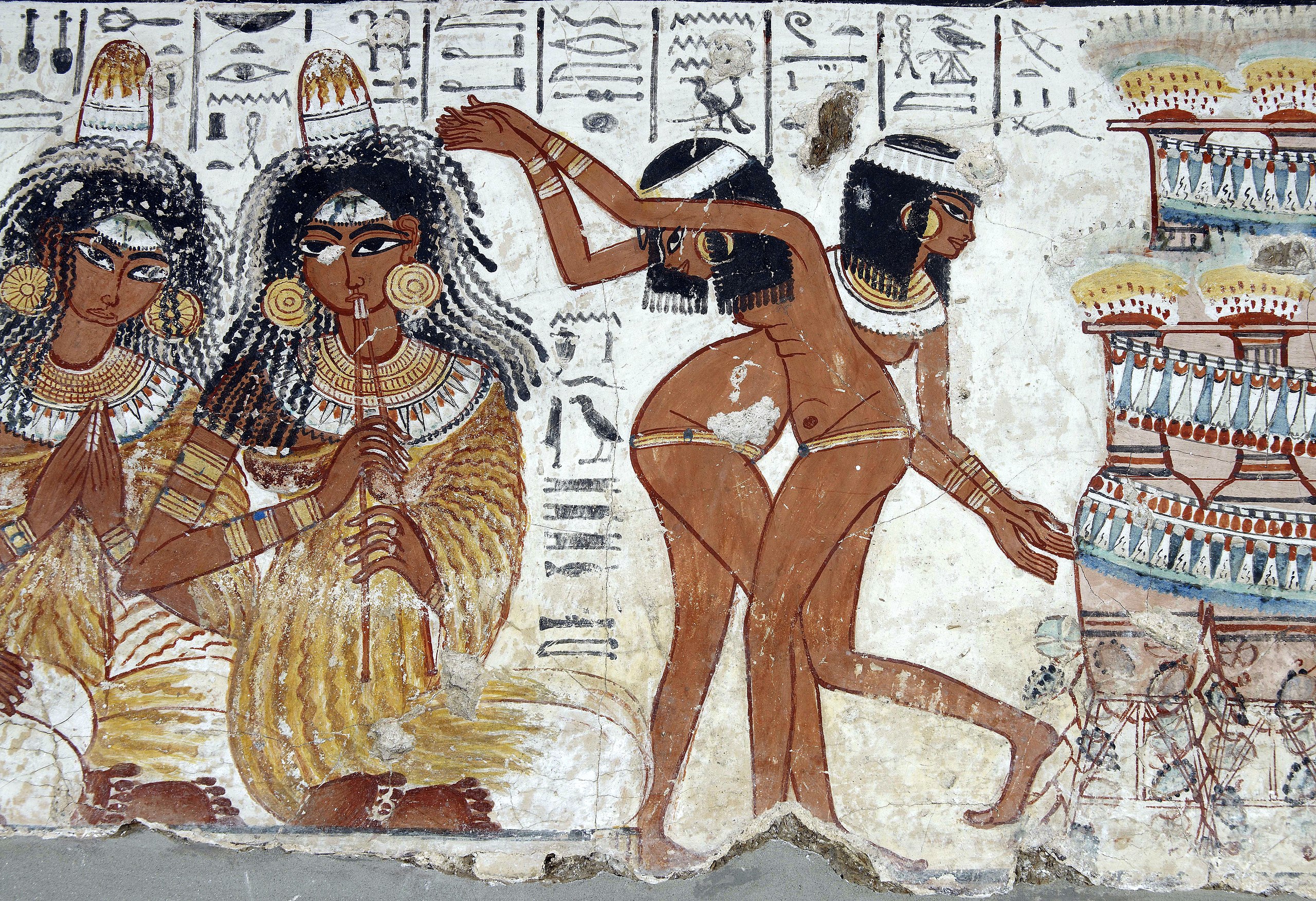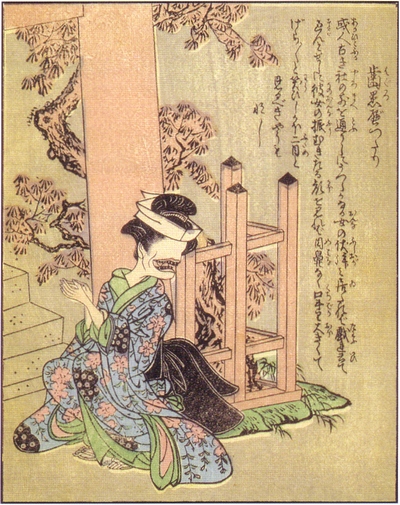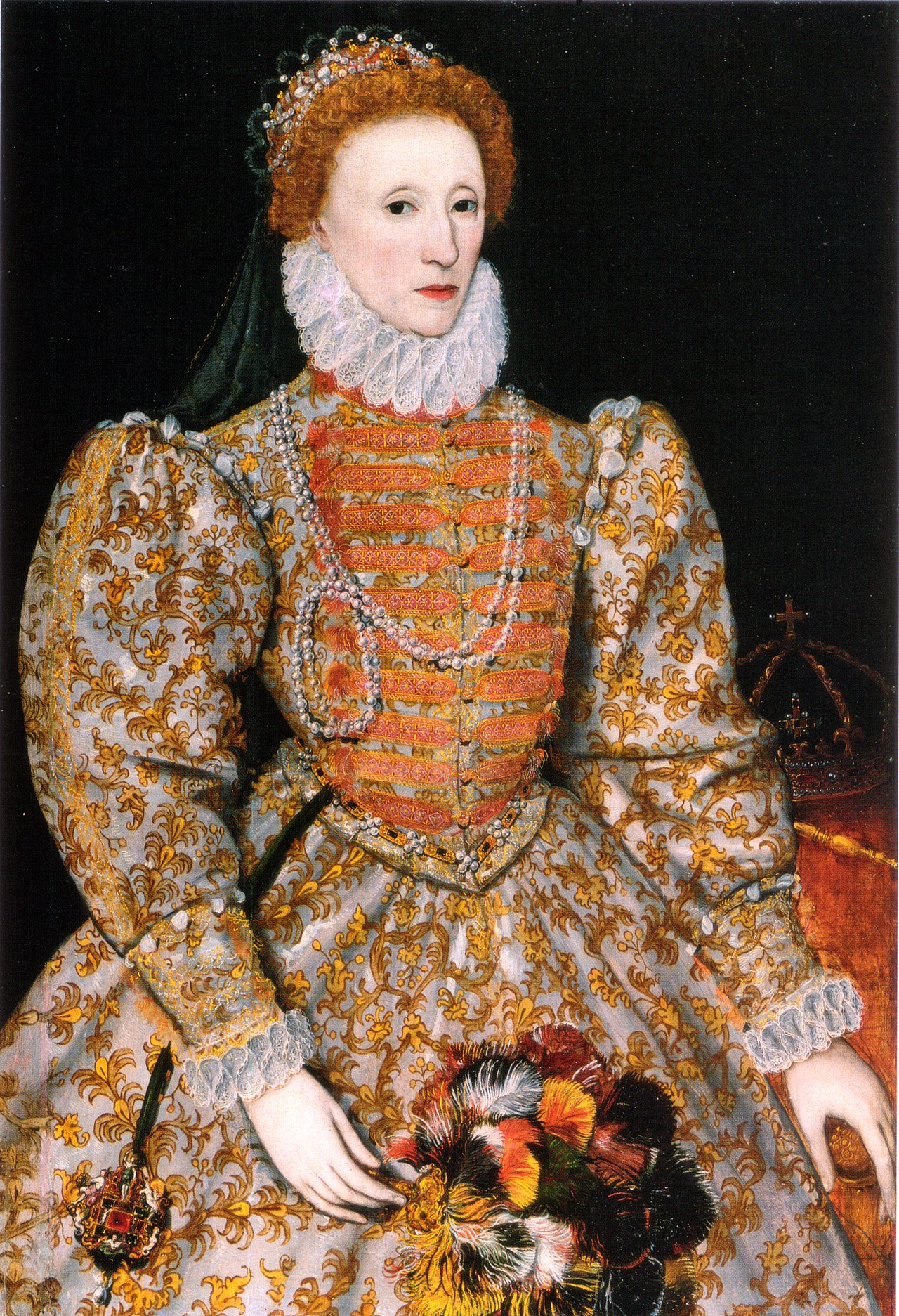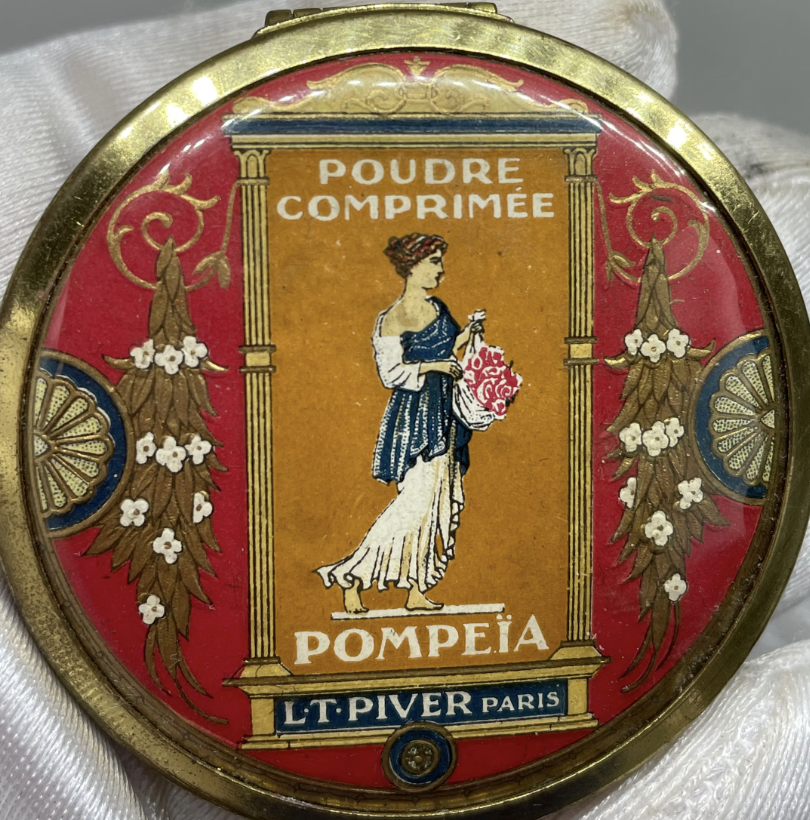Makeup
History
Our story begins in Egypt, 5000 BC. Cosmetics were an integral part of Egyptian life. One of the things we think of when we look back on the Egyptians is their bold kohl eye liner. It was made of rocks ground into a powder, a water soluble gum and then applied with a kohl stick. These cosmetics contained lead which obviously had some detrimental side effects. I also found that some believe that makeup held a spiritual aspect which is not hard to believe as they believed that makeup in general had protective function against evil influences as well as every day annoyances like the brightness of the sun. The various containers and palettes might be decorated with symbols associated rejuvenation. Animal pigments could be added to bestow the wearer with their perceived power. It’s important to remember this was not a specifically feminine thing; men and women alike adorned their faces with makeup.

An acient Egyptian mural showing musicians and dancers wearing kohl (1420–1375 BCE)
Romans also used makeup but they played to the natural side with fine powders (Again, lead-based). They used plants and fruits for colorant. They focused more on honey and oils in their various skin care product to enhance their natural skin. Makeup products (especially rouge) were associated with sex workers and hence were considered a sign of shamelessness. Theatrical performers were of the few classes of people who were expected to use cosmetics.
We see personal writings of roman doctors and philosophers with opinions against the use of makeup. For example, Seneca the Younger in a letter to his mother praised her for never defiling her face with paints or cosmetics. Some of this was at least partially rooted in stoicism which alike was rooted in moral goodness. Decorating your person implied selfishness or vanity, which leaves the loophole of enhancing your natural beauty instead of decorating it.
The Chinese used a very light-colored or white foundation powder as they wanted to distinguish themselves from the working class. They also wore strong red powder on their cheeks and darkened their eyebrows. The pigment used in most of their cosmetics was created by boiling plants, animal fats, and spices (which I think means there wasn't any lead but I’m not sure). Chines royalty used nail polish to represent their social status. High ranking leaders wore silver or gold polish and low ranking leaders wore black or red. Poorer classes were forbidden from wearing any polish.
The basis for Japaneses Makeup standards were imported from china but they broke free from that influence and created a more distinct aesthetic of their own. This included straight long hair, white powdered faces, repainted eyebrows, and (the strangest of all the practices) Ohaguro which is the practice of staining teeth black. During this period cosmetics generally centered on a palette of these three colors: red, white, and black. Why did they want to do this? Well, pitch black items were considered immensely beautiful. It’s only natural that people wanted to get closer to it. It is equivalent to bleaching our teeth today.

A painting of a Geisha in the blackening process
Nishiki-e by Utagawa Kunisada, 1815
It was done with ferric acetate from iron fillings mixed with vinegar and tannins from vegetables or teas. It was first used for celebrating coming of age for girls and boys mostly around the age of 15. Dying your teeth black for the first time signified becoming an adult. It was also done by adult aristocrats and nobles regardless of gender on a daily basis. However, it was banned by the Meiji government in 1870. I don’t know why but I do know there is some lore around a Japanese demon called Ohaguro-Bettari. If you spot a beautiful woman at night standing on the grounds of a temple or shrine, beware. She might look very pretty from behind but if you get close enough she turns around and shows you her real face: Eyeless and terrifying with a mouth full of sharp, pitch black teeth.

A depiction of Ohaguro-Bettari, 1841
Indigenous peoples also used makeup for various things. There were specific symbols that had meanings and different colors had meaning as well. They could use makeup to distinguish themselves from others and to display hierarchy within the tribe. They had makeup for different occasions and of course there was a spiritual aspect. They also used natural ingredients like ash and plants and vibrant bugs but I didn’t dive too deep into it because its debatable whether this was makeup or body paint.
Queen Elizabeth I is someone who comes to mind when we think of outrageous makeup. She was a queen who was regarded for her beauty but at the age of 29 in 1562 she contracted smallpox. This disease caused small blisters or pustules that split before drying and forming scabs that leave scars. When she was first diagnosed she called her doctor a fool and sent him away but after a while of not getting better they called him back and he again told them it was smallpox. She was very displeased and also almost dead. But she didn’t die— She was just somewhat disfigured which led to her iconic white facepaint.

Queen Elizabeth I of England
She used what was then known as Venetian Ceruse (now more accurately referred to as “White Lead”), a mixture of vinegar and lead. Most ladies smeared the mixture across their face, neck, and décolletage. Clearly the issue with this product is the lead component which, if used over an extended period of time, can cause illness and even death. If it didn’t do those things it would make your skin look more gray and wrinkled which probably made her want to use it even more. They would leave the makeup on for sometimes a whole week and even when they did wash it off… Well, I found a recipe for the cleanser: Rosewater, honey, eggshell and mercury. On top of that they would use belladonna drops in their eyes to dilate their pupils to look more seductive. Atropa Belladonna (commonly known as Deadly Nightshade) is poisonous. Surprise!
Many believe it was the lead poising that caused Queen Elizabeth’s death at the age of 69 in 1603 but that is debatable. It definitely didn’t help, that is for certain.
Queen Victoria had a very different opinion about makeup. She declared it unladylike and vulgar so the fashion trended away from adorning your face because people looked to the monarch for fashion advice. This created a big backlash for women who wore dark makeup they were again viewed as (I’m going to say prostitutes because that’s what they were called at the time but we use the term sex worker now). Though many women didn’t give up makeup entirely they would do it in secret and who’s to say they didn’t have naturally rosy cheeks. Add soot to petroleum jelly and brush it on to the eyelashes. Or they would pinch their cheeks to get them to pink up or suck on a lemon to draw color. Eat that greasy chicken a little to ferociously to really spread the gloss around. There were ways to get around the persecution as long as you weren’t really painting up your face.

1920 pressed powder container
In the early 20th century the first pressed powders were created alongside a compact mirror and puff for application. This was soon followed by pressed blush and, in the 1920’s, the eyelash curler. Movie stars began to popularize makeup and that is when we see that dark makeup come back. Celebrities like Audrey Hepburn with her deep red lips and outlined cat eyes. She is just darling. I like to mimic her makeup style.
Fun Facts
I decided to look for weird ingredients in makeup today and I have a fun list here:
- Snail secretions, for moisture.
- Sheep grease, for "smoothness."
- Bird poop, contains urea which helps moisture bind to the skin.
- Infant foreskin... I don't know why. Celebrities pay a lot of money to have facial injections.
- Fish scales, for the ✨shimmer✨
- Oil from shark liver, again for moisture.
- Cochineal beetles, which release a vibrant red dye when crushed. This dye (aka. Natural Red 4) is also present in many processed foods, which probably includes your favorite cereal.